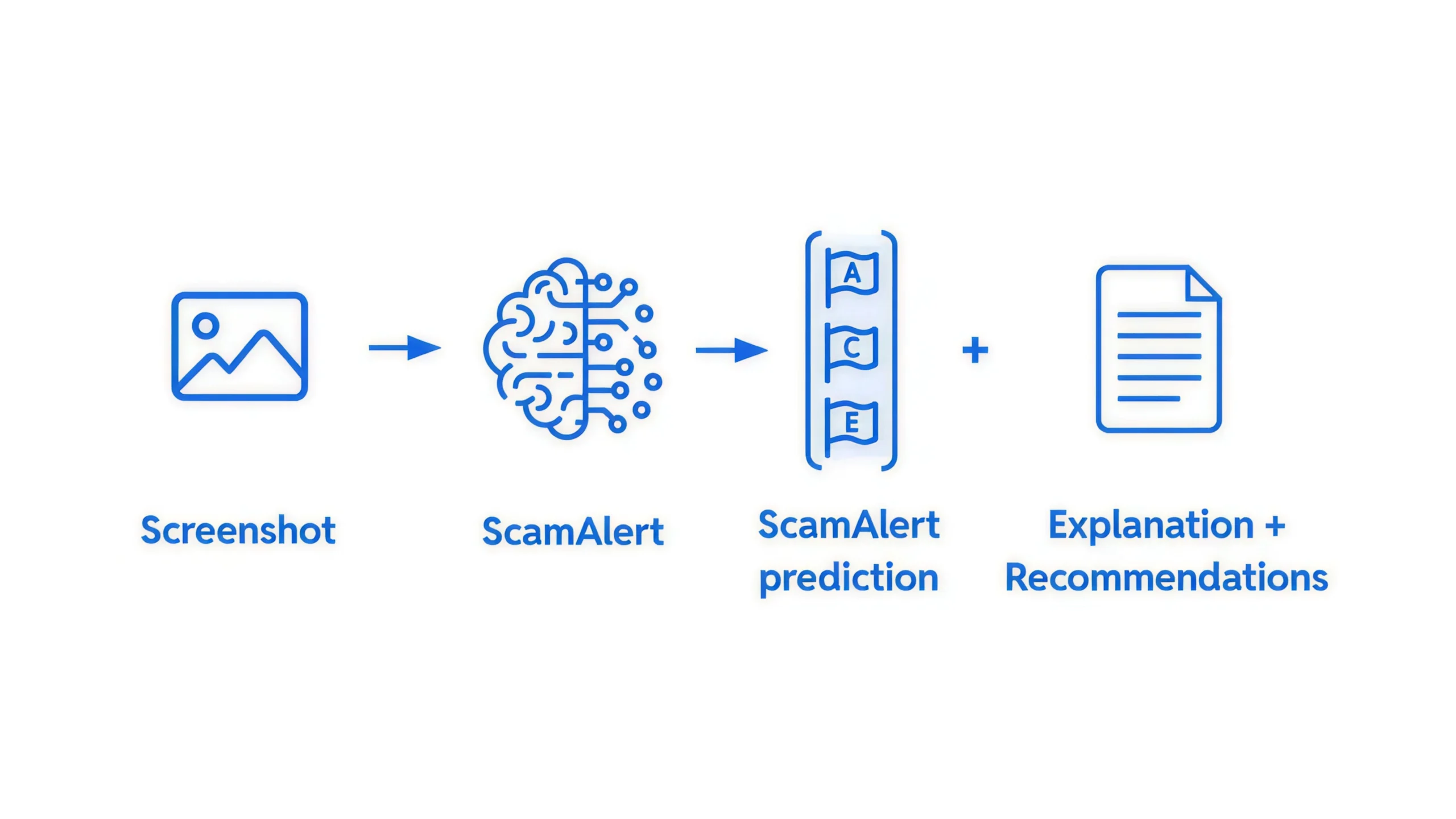Research Blog
Welcome to Feedzai Research Blog, where we feature an ongoing series of exciting tales and cool articles, elucidating the latest developments on how our experts combat villainous villains through continuous innovation in data visualization, system research, engineering, data science and Artificial Intelligence.

Benchmarking LLMs in Real-World Applications: Pitfalls and Surprises
"Are newer LLMs better?", In this post, Jean Vieira Alves and Ferran Pla Fernández explore that question with rigorous benchmarking work. Spoiler/hint: recall Betteridge's law of headlines ("Any headline that ends in a question mark can be answered by the word no.")
Jean V. Alves and Ferran Pla Fernández

Causal Concept-Based Explanations
Over the years, we have evolved from using simple, often rule-based algorithms to sophisticated machine learning models. These models are incredibly good at finding patterns in large datasets, but due to their complexity it is frequently challenging for a human to understand why a certain input leads to its respective output. This is especially problematic in areas where high-stakes decisions are being made and where human-AI collaboration is critical.
Jacopo Bono

Feedzai TrustScore: Enabling Network Intelligence to Fight Financial Crime
Detecting financial fraud is like finding a moving needle in a shifting haystack. Fraud accounts for a tiny fraction of financial transactions, often less than 0.1%. At the same time, fraudsters are constantly adapting their tactics to evade detection. And this happens within a live and dynamic environment, where financial behaviors and technologies are changing over time. In short, this is an exceptionally difficult problem for financial institutions.
Sofia Guerreiro, Ricardo Ribeiro Pereira, Iker Perez, Jacopo Bono

Here and Now: Reusing Code at Feedzai with JupyterLab Snippets
Data scientists use different Jupyter notebooks every day — ranging from disposable ones for quick tasks to those shareable with clients.
João Palmeiro

“Show Me What’s Wrong!”: Enhancing Fraud Detection Analysis by Combining Charts and Text
Every year, millions of people fall victim to financial fraud. In 2023, the losses tied to this type of crime were estimated at US$159 billion just in the US, with some people losing all of their retirement savings to scammers.
Beatriz Feliciano
The GANfather: Using Malicious GenAI Agents to Combat Money Laundering
Digital systems have become deeply integrated into many aspects of modern life, particularly within the financial sector. While digital banking simplifies day-to-day operations for clients, it also creates new opportunities for malicious actors to exploit these systems.
Ricardo Ribeiro Pereira

Aequitas Flow step-by-step: a Fair ML optimization framework
In this blog post we will visit Aequitas Flow, an Open-Source framework designed to run complete and standardized experiments of Fair ML algorithms. We encourage you to try Aequitas Flow with the Google Colab Notebooks, which are available in the project’s GitHub repository.
Sérgio Jesus

Building Trust in a Digital World: The Role of Machine Learning in Behavioral Biometrics
In the world of financial services, the bank or financial institution’s relationship with the customer relies on digital trust, which is anchored in two fundamental principles. First, it must ensure the person engaging through digital banking channels is genuinely the individual they claim to be. Second, it must confirm that this person is authorized to complete the intended financial transaction.
Javier Liébana

AML Reimagined: LaundroGraph Exploits Graph Structure to Assist Anti-Money Laundering Activities
We introduce LaundroGraph, a self-supervised system based on graph-neural networks to assist experts during anti money laundering
Mário Cardoso

TimeSHAP: Explaining recurrent models through sequence perturbations
Recurrent Neural Networks (RNNs) are a family of models used for sequential tasks, such as predicting financial fraud based on customer behavior. These models are very powerful, but their decision processes are opaque and unintelligible to humans and rendering them black boxes to humans. Understanding how RNNs work is imperative to assess whether the model is relying on any spurious correlations or discriminating against certain groups. In this blog post, we provide an overview of TimeSHAP, a novel model-agnostic recurrent explainer developed at Feedzai. TimeSHAP extends the KernelSHAP explainer to recurrent models. You can try TimeSHAP at Feedzai’s Github.
Joao Bento, André Cruz, Pedro Saleiro

Analyzing Data Drift: How We Designed Visualizations to Support Feature Investigation
Find more about how we designed visualizations to support our new tool to automatically detect drift in data over time, Feature Investigation.
João Palmeiro
Feature Investigation: Automatically Detect Drift in your Data Over Time
Find out more about Feature Investigation, a new tool to automatically detect drift in your data over time
Ricardo Moreira, Marco Sampaio, Hugo Ferreira

Building Feedzai’s First Figma Charting Library: A Summer Experience
Find out more about the recent Figma Library of charts created to help Feedzai’s Data Visualization and UX teams in their mockups creation process.
Francisca Calisto

Styling Altair Charts with the feedzai-altair-theme
Find out about Altair themes and a new Python package for Data Visualization with Altair.
João Palmeiro

How Feedzai ARMS automates rule management in large scale systems
Learn how Feedzai ARMS automatically optimizes rule systems, all while achieving the detection performance required by our clients.
Ricardo Barata and Hugo Ferreira
Empowering Fast Graph Visualizations for Fraud Detection (or Why We Built Our Own Graph Database)
Learn how we boosted Genome, a financial crime visualizer using link analysis, performance up to 100x, by building our graph database.
Francisco Santos and Sofia Gomes

Light Speedy Profiling to Fight Fraud
An overview of profiling methods, with data science and engineering experiments using exponential moving averages.
Pedro Cardoso and Marco O. P. Sampaio

Railgun: A new weapon for mission critical streaming tasks
We present Railgun, a streaming engine that provides accurate metrics with millisecond-level latencies in a distributed setting.
Sofia Gomes

Are Streaming Engines lying to you too?
Streaming engines claim they support sliding windows. In truth what they really have are stepping windows. Have you been lied to as well?
Pedro Cardoso

ML-Powered Automatic Model Monitoring
The life of a data scientist at Feedzai, deploying and maintaining machine learning (ML) models in large scale production environments, constantly offers new exciting and challenging problems. In this post, we will discuss
Marco O. P. Sampaio

Connecting the dots: how to see the shape of fraud
At Feedzai, we’re in a constant and ever-evolving fight against financial crime. To be efficient fraud fighters, we leverage large amounts of data. Data scientists use our platform to build machine learning models from historical data, which are then deployed to stop worldwide fraudsters in real time.
Beatriz Malveiro
Page printed in 24 Dec 2025. Plase see https://research.feedzai.com/research-blog for the latest version.